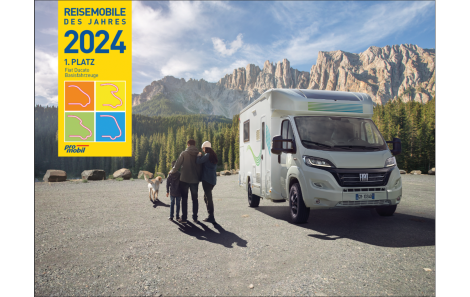Sign up for daily news updates from CleanTechnica on email. Or follow us on Google News!
If you’ve tried to drive between the LA metro area and Las Vegas in the last couple of days, you probably didn’t have a very good time. A truck carrying a 75,000 lb container with lithium-ion battery cells inside got into an accident and the cells went into thermal runaway. The resulting fire wasn’t easily extinguished, and attempts to pull it away from the roadway were unsuccessful. This left drivers stuck on Interstate 15 near Baker, California, for hours.
#Baker #California I-15 closed near #Baker after a semi-truck carrying lithium batteries caught fire Friday morning. The fire was reported at approx 6:30am. I-15 was closed in both directions by 8:30am.#CaliforniaHighwayPatrol and the #SanBernadinoFireDept advised the… pic.twitter.com/ea0ec6iHRz
— SLCScanner (@SLCScanner) July 27, 2024
The usual disinformation about the danger of lithium-ion batteries is already pouring out on social media. They’re supposedly little bombs or fire makers sitting there in your car, and you never know when they might go off. So, we should all go back to burning fossil fuels for everything, and maybe even attach little gas engines to everything like in the old Nissan LEAF commercial, right?
But, the reality is that fires of this sort in electric cars, phones, and laptops are very rare. Occasionally, a poorly designed device/vehicle or defective batch of cells will go up and cause a streak of fires before a recall remedies them, but other than that, battery cells have proven to be very safe — safer than gasoline tanks in cars.
This safety is no accident. The battery cells themselves are supposed to be built with a certain tolerance for damage before they’d go into thermal overload. The devices themselves have automated battery management systems that prevent too much power from being pulled or too much heat from building up. Then, electric vehicles have robust containers around them designed to withstand a very serious accident without exposing the cells to damage.
These systems can fail under extreme conditions, though. For example, some badly sealed electric vehicles in Florida got flooded after a hurricane, resulting in several fires when saltwater intruded and shorted the cells out. Occasionally, an extreme accident or something unusual like an idiot negligently firing a pistol into the battery pack can cause a fire. But, overall, devices and vehicles using lithium batteries are still safer than the alternatives.
But what about cells that aren’t yet attached to a battery management system and aren’t packaged in a protective shell to keep water and mechanical damage away? That’s a question this accident is going to force us to think about.
Safe Storage & Carry Of Loose Cells
Before I get into this, I want to make it clear that I have no idea how this container of battery cells was packed. For all I know, precautions against fire were taken at every step and something highly unusual happened during this crash to cause them to go up in flames. That information is going to have to come out as the investigation continues.
That having been said, there are some pretty serious safety issues in the trucking industry right now. There are simply too many trucking companies engaging in poor driver hiring and training, bad loading and securing of loads, neglected vehicle maintenance, and other things that we expect professional haulers to do better. There are regulations for all of this, of course, but the sheer volume of cargo that needs to be hauled around the United States every day means that it would be cost prohibitive to check on everybody and make sure they’re all doing the right thing.
While nearly all trucking companies, drivers, and people loading trailers are good people doing their best, there’s a small minority of companies who cut corners, hire drivers with suspended CDLs, use illegal drugs, etc. Many companies that are considered safe push drivers to do dumb things like drive tired, too.
In addition to normal truck and load safety, there are special rules and guidelines for the safe transport of lithium-ion batteries. They’re considered hazardous materials (hazmat), and are subject to all of those rules. Rules differ for loose cells vs complete batteries and devices that have safety systems operating. Before being shipped, the cells themselves have to meet applicable safety standards for things like impact, short circuit resistance, overcharge, and vibration. Smaller battery cells and packs are subject to different hazmat rules than larger ones, as larger ones are potentially more dangerous.
These safety standards are far too complex to fully address here (but you can read all about them here), but in short, cells and batteries have to be cared for at every level. The cells themselves, the packaging they’re in, the temperatures, and the overall load of batteries are all regulated. On top of that, there are special rules for any cells that are used, damaged, or subject to recalls to make those loads even safer.
A Lot Of Failure Points
When you stack all of these regulations, there are a lot of things that can go wrong. Basic things, like a drugged out or unhealthy driver, or an unsecured load can go wrong. More complex mistakes, like defective battery cells, badly packed loads, and such could all be to blame for the fire. Absent some real care for making sure everyone does it right, these accidents could become more common as more and more batteries go into commerce.
The regulations seem to be well-crafted, and most people get it right, but there are only so many regulators and inspectors to go around and we can’t delay too many loads for inspection or we’d gum up the whole economy.
Response Is A Big Part Of The Equation
Another important thing to think about is how fire departments and other public safety personnel respond to these incidents. If something like this happens near a fire hydrant, it’s pretty easy to just drown the crap out of the burning cells until the chemical reaction gets retarded enough to get the flames under control. It’s a fancier version of this joke:
But when the accident happens in the middle of the desert and thousands upon thousands of gallons of water aren’t readily available, it’s tough to take that approach. So, improved methods for dealing with these kinds of rural fires are going to need to be developed.
Featured image by the San Bernardino Fire Department (Public Domain).
Have a tip for CleanTechnica? Want to advertise? Want to suggest a guest for our CleanTech Talk podcast? Contact us here.
Latest CleanTechnica.TV Videos
CleanTechnica uses affiliate links. See our policy here.
CleanTechnica’s Comment Policy





